The post Common Uses of Blacklight Flashlights in Daily Life appeared first on Tank007.
]]>1. Detecting Pet Stains and Cleaning Verification
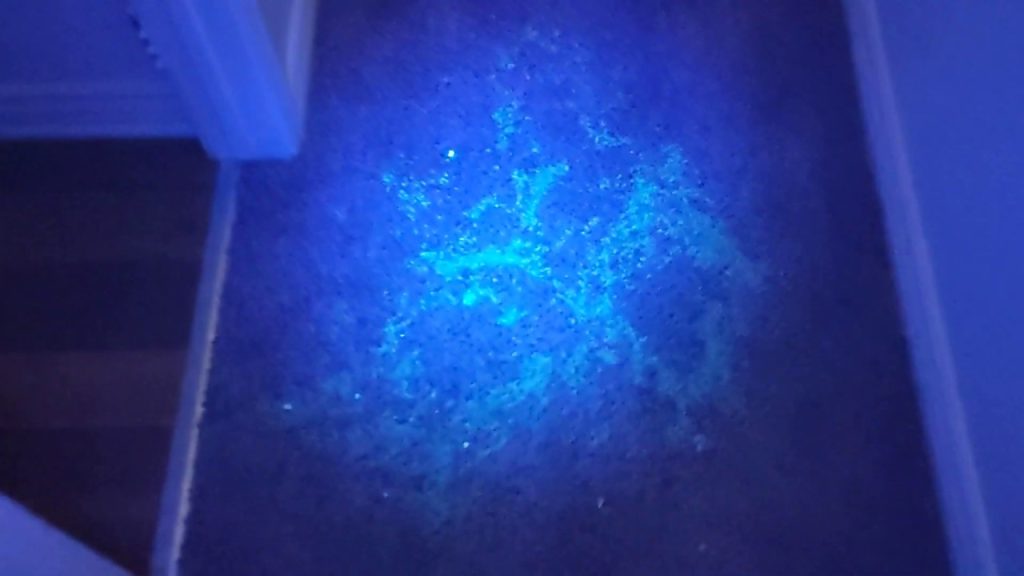
Purpose:
Blacklight flashlights can reveal urine stains and other biological residues that are invisible in normal light. This is especially useful for pet owners who want to ensure thorough cleaning.
How it Works:
Pet urine contains phosphorus and proteins that glow under UV light, making it easy to spot and clean effectively.
Tip: Use the flashlight in a dark room for the best results.
2. Authenticating Currency and IDs
Purpose:
Blacklight flashlights are used to verify the authenticity of banknotes, passports, and identification cards by illuminating hidden security features like UV-reactive strips and watermarks.
How it Works:
Genuine currency and IDs are embedded with fluorescent fibers or ink that glows under UV light, helping prevent fraud.
Tip: Check multiple security features to ensure authenticity.
3. Detecting Scorpions and Insects
Purpose:
Campers and residents in regions with scorpions use UV flashlights to detect them, as scorpions fluoresce a bright blue-green under UV light.
How it Works:
The exoskeleton of scorpions contains hyaline, a substance that reacts with UV light.
Tip: Scan areas like cracks, rocks, and under furniture.
4. Mineral and Gem Identification
Purpose:
Geologists and collectors use UV flashlights to identify minerals and gems that fluoresce in various colors.
How it Works:
Certain minerals contain elements like calcium and tungsten that glow under UV light.
Tip: Carry a UV flashlight during rock-hounding trips to identify valuable specimens.
5. Detecting Leaks in Automotive and HVAC Systems
Purpose:
Technicians use blacklight flashlights to detect leaks in automotive air conditioning systems by using a fluorescent dye.
How it Works:
The dye, when exposed to UV light, reveals the exact location of leaks.
Tip: Use in combination with safety glasses to enhance visibility.
6. Bed Bug Detection in Hotels
Purpose:
Travelers use UV flashlights to inspect hotel rooms for bed bugs and other pests.
How it Works:
Bed bug shells and stains fluoresce under UV light.
Tip: Inspect mattresses, seams, and headboards carefully.
7. UV Art and Forensic Investigations
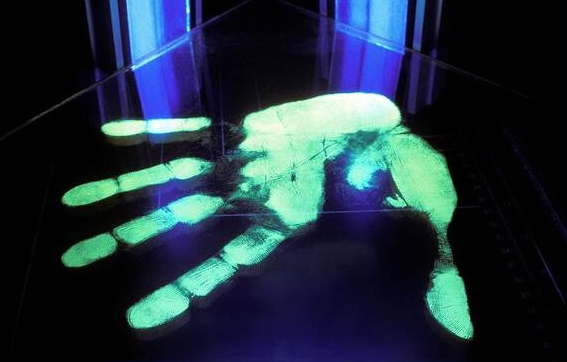
Purpose:
- Art: UV light helps artists create and view hidden layers in paintings.
- Forensics: Used to detect blood, fibers, and other evidence at crime scenes.
How it Works:
Bodily fluids and certain dyes used in art fluoresce under UV light.
Tip: Use a 365nm UV flashlight for forensic work to avoid false positives.
8. Identifying Counterfeit Products
Purpose:
Brands embed UV-reactive features in their products to combat counterfeiting.
How it Works:
Genuine products will display hidden logos or marks under UV light.
Tip: Check for UV marks on luxury items like watches and handbags.
Comparison Table: Uses of Blacklight Flashlights
| Application | UV Wavelength Recommended | Typical Users | Key Benefit |
|---|---|---|---|
| Detecting Pet Stains | 365nm – 395nm | Pet Owners | Ensures thorough cleaning |
| Authenticating Currency and IDs | 365nm | Retailers, Security Personnel | Prevents fraud |
| Detecting Scorpions | 395nm | Campers, Residents | Enhances safety |
| Mineral and Gem Identification | 365nm | Geologists, Collectors | Identifies valuable minerals |
| Detecting Leaks in HVAC and Automotive Systems | 395nm | Technicians | Locates leaks quickly |
| Bed Bug Detection | 365nm – 395nm | Travelers | Ensures cleanliness of accommodations |
| UV Art and Forensic Investigations | 365nm | Artists, Forensic Experts | Reveals hidden layers or evidence |
| Identifying Counterfeit Products | 365nm | Brands, Consumers | Confirms product authenticity |
Tips for Choosing the Right Blacklight Flashlight
- Wavelength:
- 365nm: Best for forensic work and identifying security features.
- 395nm: Suitable for pet stains and scorpion detection.
- Power Source:
- Choose rechargeable options for frequent use.
- Build Quality:
- Aluminum alloy bodies provide better durability.
Conclusion
Blacklight flashlights are versatile tools with numerous daily applications, from cleaning and security to hobbyist and professional uses. By understanding their different uses and choosing the right type, you can maximize the benefits of UV lighting in your everyday life.
The post Common Uses of Blacklight Flashlights in Daily Life appeared first on Tank007.
]]>The post Blacklight Flashlight vs Regular Flashlight: Key Differences appeared first on Tank007.
]]>What is a Blacklight Flashlight?
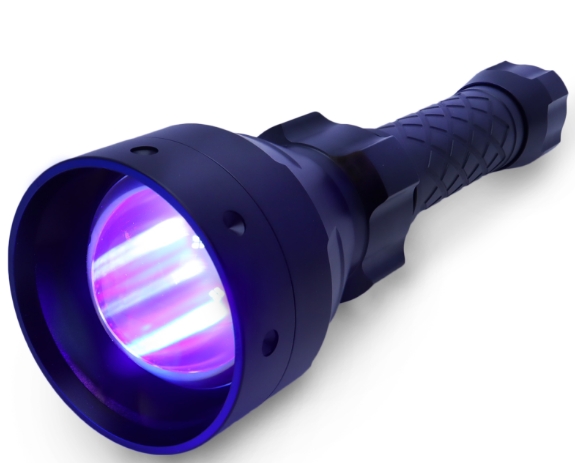
A blacklight flashlight emits ultraviolet (UV) light, which is invisible to the human eye. This UV light causes certain materials to fluoresce, allowing you to see things that would otherwise be invisible under normal lighting. Blacklight flashlights are widely used in forensic investigations, currency verification, mineral identification, and pet stain detection.
Key Features of Blacklight Flashlights:
- UV Light: Emits light in the ultraviolet spectrum (typically between 320nm to 400nm).
- Fluorescence: Causes certain substances to glow or fluoresce under UV light.
- Applications: Used for professional tasks like forensic investigations, mineral hunting, and detecting hidden stains.
What is a Regular Flashlight?
A regular flashlight emits visible light, usually in the range of 400nm to 700nm (the visible spectrum). These flashlights are designed to illuminate areas or objects, allowing you to see them in low-light conditions. Regular flashlights are commonly used for general purposes, such as lighting up a dark room, navigating in the dark, or providing visibility for outdoor activities.
Key Features of Regular Flashlights:
- Visible Light: Emits light in the visible spectrum (typically between 400nm to 700nm).
- General Illumination: Provides light to help you see objects in dark environments.
- Applications: Used for general lighting tasks, such as walking at night, reading in low light, or emergency situations.
Key Differences Between Blacklight Flashlights and Regular Flashlights
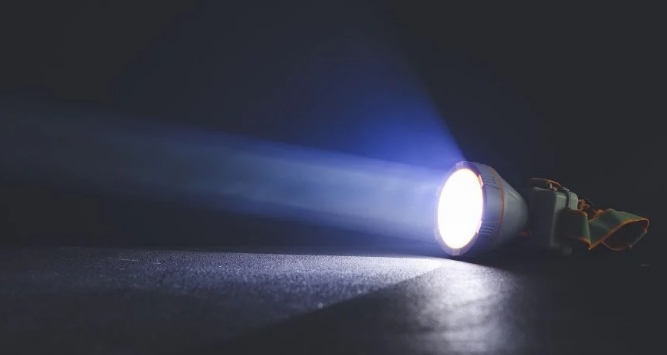
| Feature | Blacklight Flashlight | Regular Flashlight |
|---|---|---|
| Light Spectrum | Ultraviolet (UV) light (320-400nm) | Visible light (400-700nm) |
| Primary Function | To reveal fluorescent materials that are invisible in normal light. | To provide general illumination for visibility in dark areas. |
| Applications | Forensic analysis, mineral identification, pet stain detection, currency verification | General lighting for tasks like walking, reading, or emergency situations |
| Power Source | Often uses rechargeable lithium-ion batteries. | Uses various batteries like AA, AAA, or rechargeable options. |
| Effect on Materials | Causes materials to fluoresce and glow, highlighting hidden details. | Illuminates objects for general visibility. |
| Price Range | Generally higher due to specialized UV technology. | More affordable, widely available for everyday use. |
| Beam Color | Invisible to the naked eye; only certain materials fluoresce under UV light. | White or colored light, visible to the human eye. |
Applications of Blacklight Flashlights
Blacklight flashlights are specially designed for tasks that require detecting materials or features not visible under regular light.
1. Forensic Investigations
- Use: Detect bodily fluids, fingerprints, and trace evidence that may not be visible under normal lighting.
- Example: UV light can make bloodstains, semen, and sweat visible, which is crucial in criminal investigations.
2. Currency Authentication
- Use: Verify the authenticity of banknotes by detecting UV-reactive security features.
- Example: Many modern currencies have hidden features, such as security threads or watermarks, that are visible only under UV light.
3. Mineral Identification
- Use: Identify fluorescent minerals or gems.
- Example: Many minerals, such as calcite, fluorite, and amethyst, glow under UV light, making it easier for mineral collectors to identify them.
4. Pet Stain Detection
- Use: Detect pet stains or urine marks on carpets and furniture that are invisible under normal light.
- Example: UV light highlights urine stains, making them easier to clean.
Applications of Regular Flashlights
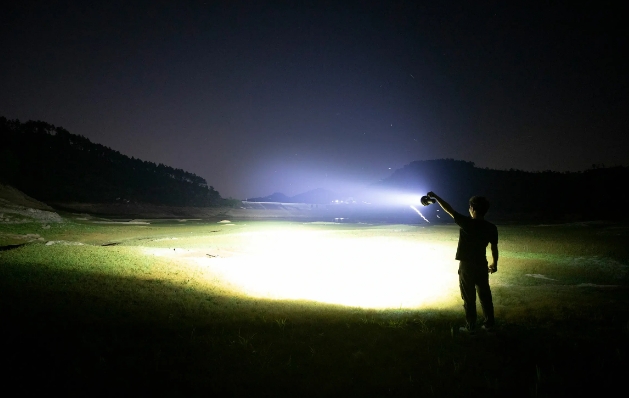
Regular flashlights are essential for many basic lighting tasks and are used in various daily activities.
1. General Illumination
- Use: Provide light for tasks like walking at night or working in dark spaces.
- Example: Flashlights can be used to light a path while hiking, navigate in an emergency, or see your way around in the dark.
2. Emergency Situations
- Use: Serve as an emergency light source in case of power outages or when navigating through dark environments.
- Example: Keeping a regular flashlight handy during power outages or while camping can be life-saving.
3. Outdoor Activities
- Use: Provide light for camping, hiking, or exploring outdoors in the dark.
- Example: Flashlights are used during camping trips for setting up tents, cooking, or exploring at night.
4. Everyday Carry
- Use: Convenient, small flashlights for everyday situations.
- Example: Compact flashlights are great for everyday carry (EDC) to provide light when needed in everyday tasks.
Which One Should You Choose?
When to Choose a Blacklight Flashlight:
- If you are working in forensics, crime scene investigations, or any profession where revealing hidden evidence is crucial.
- If you need to identify minerals or gems that fluoresce under UV light.
- If you’re verifying the authenticity of currency or documents.
- If you need to detect invisible stains, like pet urine or body fluids.
When to Choose a Regular Flashlight:
- If you need general illumination for everyday tasks, outdoor activities, or emergencies.
- If your primary goal is to light up an area or object, not detect hidden fluorescence.
- If you’re looking for an affordable, easy-to-use light source for basic lighting needs.
Conclusion
While both blacklight flashlights and regular flashlights serve vital purposes, they differ significantly in their functionality and applications. Blacklight flashlights are specialized tools used for detecting invisible substances or verifying authenticity, while regular flashlights are designed for general illumination in various environments.
The post Blacklight Flashlight vs Regular Flashlight: Key Differences appeared first on Tank007.
]]>The post What is a Blacklight Flashlight and How Does It Work? appeared first on Tank007.
]]>Understanding Blacklight Flashlights
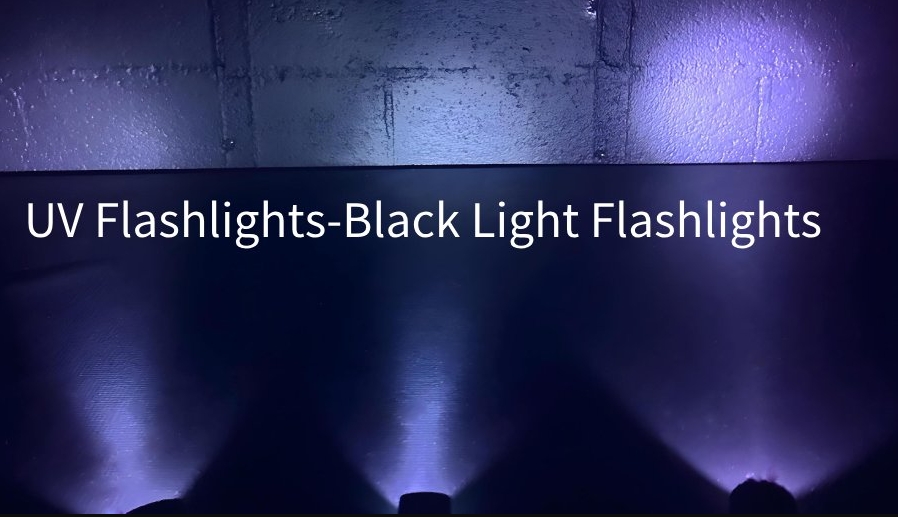
What is a Blacklight Flashlight?
A blacklight flashlight emits UV light, typically in the UVA spectrum (320-400 nm). This light is invisible to the human eye but causes certain materials to fluoresce, making them glow brightly. These flashlights are commonly used in forensic investigations, currency authentication, mineral detection, and pest control.
How Does a Blacklight Flashlight Work?
- UV Light Emission:
- The flashlight uses UV LEDs or bulbs to emit ultraviolet radiation.
- Wavelengths typically range between 365nm and 395nm, with 365nm being purer UV light and 395nm containing slight visible purple light.
- Fluorescence Reaction:
- When UV light strikes fluorescent materials (e.g., minerals, banknotes, or pet stains), the material absorbs the UV radiation and re-emits it as visible light, creating a glowing effect.
- Power Source:
- Most blacklight flashlights are powered by batteries, ranging from AA/AAA types to rechargeable lithium-ion batteries.
- Lens and Focus:
- The lens and reflector in the flashlight focus the UV beam for precision applications like spotting stains or examining small objects.
Key Features of Blacklight Flashlights

| Feature | Description | Examples |
|---|---|---|
| Wavelength | Defines the UV spectrum emitted (365nm or 395nm). | 365nm for professional use; 395nm for general applications. |
| Light Source | LEDs are the most common due to their efficiency and durability. | UV LEDs with a lifespan of 20,000+ hours. |
| Power Supply | Determines portability and runtime. | Rechargeable batteries for frequent use; disposable batteries for occasional use. |
| Build Material | Impacts durability and weight. | Aluminum alloy for robust, lightweight designs. |
| Size | Varies based on usage. | Compact flashlights for travel; larger ones for industrial use. |
Comparison of 365nm vs. 395nm Blacklight Flashlights
| Feature | 365nm UV Flashlight | 395nm UV Flashlight |
|---|---|---|
| UV Purity | Produces purer UV light with minimal visible light. | Emits UV light with visible purple hues. |
| Applications | Professional tasks like forensic work and mineral identification. | General use, such as pest control or stain detection. |
| Price | Higher due to advanced technology. | More affordable and suitable for casual users. |
| Effectiveness | Superior for detecting subtle fluorescence. | Works well for broader, less precise applications. |
Common Applications of Blacklight Flashlights

- Forensics and Crime Scene Investigation:
Detect body fluids, fingerprints, and other evidence invisible under regular light. - Currency Authentication:
Verify the authenticity of banknotes by exposing UV-reactive security features. - Mineral and Fossil Detection:
Identify minerals like calcite, fluorite, and amber by their unique fluorescence. - Pest Control:
Spot scorpions and other pests that fluoresce under UV light. - Cleaning Inspections:
Detect stains on carpets, fabrics, and hard surfaces to ensure thorough cleaning.
How to Choose the Right Blacklight Flashlight
- Determine Your Purpose:
Choose a 365nm flashlight for precision tasks or a 395nm flashlight for casual use. - Consider Portability:
For fieldwork, select a lightweight, compact model. - Check Battery Type:
Rechargeable options are ideal for frequent use, while disposable batteries suit occasional use. - Build Quality:
Look for durable materials like aluminum alloy, which is resistant to impact and wear. - Budget:
Professional-grade models may cost more but offer higher performance and longevity.
Conclusion
A blacklight flashlight is an essential tool for anyone working with fluorescence detection or UV-sensitive materials. Understanding its mechanics and choosing the right model for your needs can significantly enhance your efficiency and results. Whether you’re a professional or a casual user, the correct blacklight flashlight can open up a world of possibilities.
The post What is a Blacklight Flashlight and How Does It Work? appeared first on Tank007.
]]>